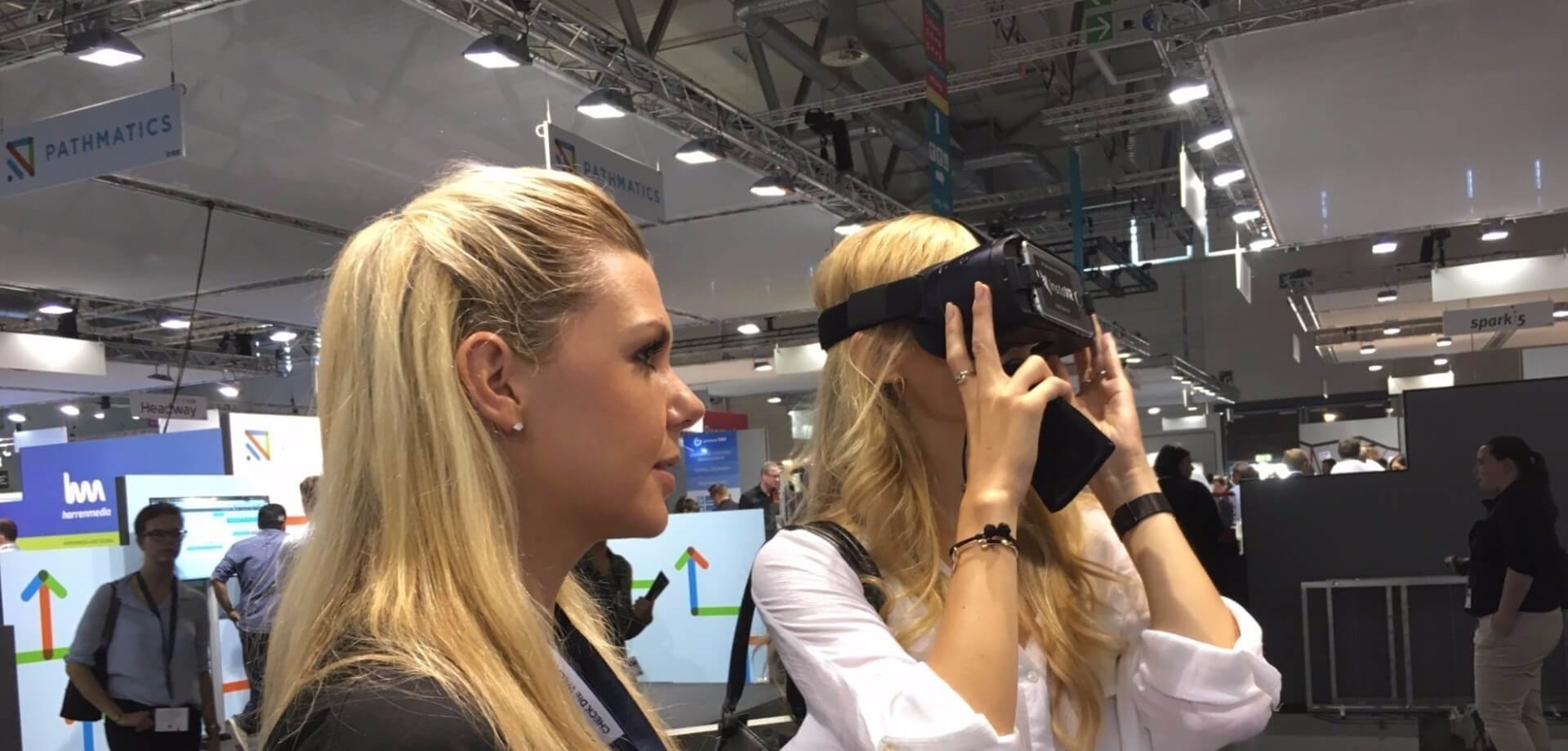

Glimpse Group
How Marketing Agencies Can Harness VR in Their Next Campaign
Over the past few years, the Virtual Reality (VR) market has seen stunning growth. Falling hardware prices and an increasing range of VR software has created a wide range of new possibilities for both consumers and businesses.
The technology, which transports users to virtual environments through the use of special head-mounted displays, has strong potential for use in marketing. Some brands have already applied the tech to create unique experiences and product showcases that wouldn’t have been possible with any other approach.
This is how major brands have already leveraged VR to support their marketing efforts — and how marketing agencies may be able to harness the tech in their future campaigns.
1. Immersive Experiences
Marketing companies and businesses are using VR to create immersive, single-person experiences for ad campaigns.
These experiences can vary significantly in actual content and structure. Some may be semi-interactive films, which allow users to watch a scene play out like they’re really there. Others may be closer to an interactive room or product demonstration.
If a client wants to run a campaign with strong sensory or visual elements, they may benefit from this kind of VR marketing.
Immersive experiences were part of the marketing for the “Game of Thrones” television series. Marketers designed an exhibit that combined real-world, practical effects with an immersive VR experience that allowed visitors to inhabit the show’s world.
These VR experiences can also be great for breaking down complex topics or showing off complicated hardware. Another company that is developing a digital sorting platform, created a VR exhibition to show off how the company’s sorting platform worked in a food industry context.
These experiences can be a significant investment. Most require advanced hardware, strong design work and expert programming. However, they can provide an extraordinarily unique experience that potential customers won’t get anywhere else.
Marketing companies that don’t want to go all-in on a VR experience may consider 360-degree experiences instead. These are effectively 3D videos, and they’re supported by popular platforms like YouTube — making them accessible to potential customers without VR or AR hardware on hand.
Self-driving car startup Waymo used a 360-degree video to showcase what it’s like to take a trip in one of its autonomous vehicles. The video, which has had more than 1 million views since its publication in February 2018, features a voice-over that explains how the company’s cars use modern tech to safely navigate city streets.
These videos can work well if your audience doesn’t have the tech necessary for a scene in VR or AR.
2. Virtual Events
Some companies have taken advantage of the growing availability of VR tech by holding events entirely in virtual reality.
So far, individuals and organizations have hosted a wide range of event types — everything from holiday office parties to a New Year’s countdown held in VRChat, a VR-based social platform.
Some companies have also had success moving conferences and webinars online. They are using VR to offer an experience that’s closer to an in-person event than the typical digital experience.
There is a growing range of VR event platforms, making it easier than ever for companies to host gatherings on their own.
If it’s not possible or practical to have an in-person launch party or conference for a client, VR is a viable option. It’s the closest thing you can get to a real-life, in-person event over the internet.
Like other online events, digital security may be an issue. Phishing attacks from hackers posing as event organizers could potentially lead to data breaches unless the proper precautions are taken.
3. Product Visualizations
VR can also be a powerful tool for helping customers visualize how a product will look in real life.
Major brands have used this approach to great effect. For example, Lowe’s tested a VR- and AR-powered tool that helped potential customers visualize what their home would look like before and after a major renovation.
The tech allowed customers to easily compare multiple renovation options. If someone wanted to quickly view various room colors or different countertop styles, they could use the tool to examine those looks in a simulation of their actual living space.
Automaker Volvo created a similar tool, built specifically for Google Cardboard, a low-cost VR display that only needs a cardboard housing and standard smartphone. The tool allows users to test-drive some of the company’s latest cars. It can give customers a sense of what the interior really looks like from a driver’s perspective, even if they can’t get to a dealership.
This approach provides people with a sense of the real-world appearance and feel of a product. Other digital tools can’t offer the same experience.
VR Technology Opens up New Opportunities for Marketers
VR offers major opportunities for marketers willing to invest in the technology. New immersive experiences, online events and product visualization tools are all possible uses of the tech. Each offers potential benefits for businesses — like more engaging marketing or better product demonstrations.
Hardware costs for VR remain high, but have steadily decreased over the past few years. At the same time, new platforms have made it easier than ever for companies to jump into using VR in their branding efforts. For agencies that want to experiment with VR, now may be one of the best times to start.
Glimpse Group
The Glimpse Group is a Virtual Reality & Augmented Reality Platform Company Comprised of Multiple Software & Services Subsidiaries Creating Innovative VR/AR Solutions (products, software, and consulting services)